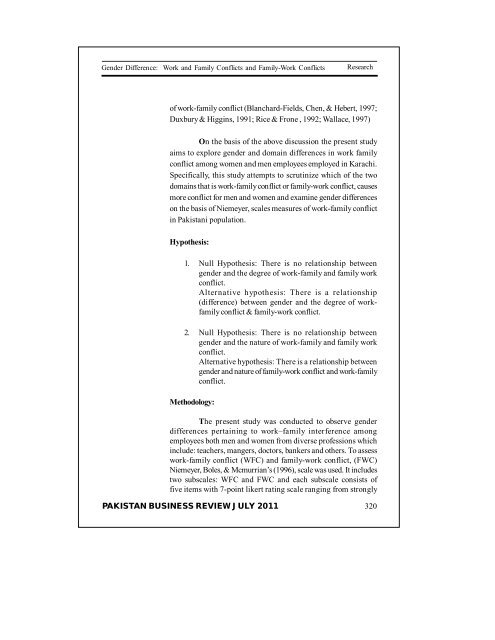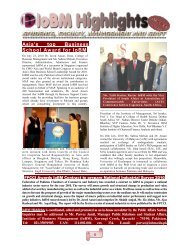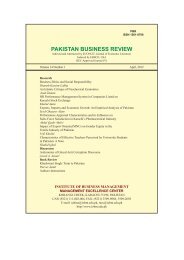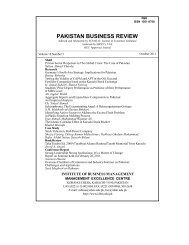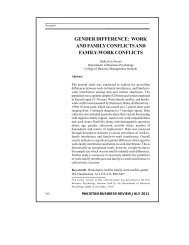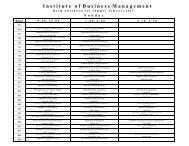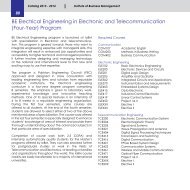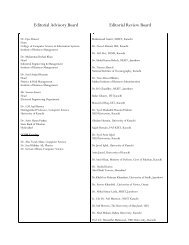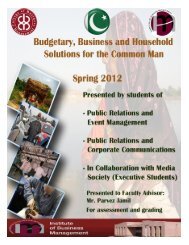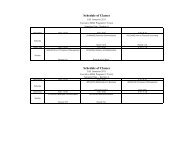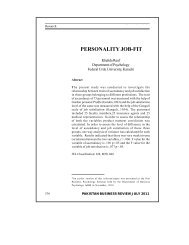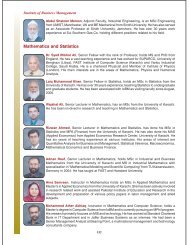PAKISTAN BUSINESS REVIEW - Institute of Business Management
PAKISTAN BUSINESS REVIEW - Institute of Business Management
PAKISTAN BUSINESS REVIEW - Institute of Business Management
Create successful ePaper yourself
Turn your PDF publications into a flip-book with our unique Google optimized e-Paper software.
Gender Difference: Work and Family Conflicts and Family-Work Conflicts<br />
Research<br />
<strong>of</strong> work-family conflict (Blanchard-Fields, Chen, & Hebert, 1997;<br />
Duxbury & Higgins, 1991; Rice & Frone , 1992; Wallace, 1997)<br />
On the basis <strong>of</strong> the above discussion the present study<br />
aims to explore gender and domain differences in work family<br />
conflict among women and men employees employed in Karachi.<br />
Specifically, this study attempts to scrutinize which <strong>of</strong> the two<br />
domains that is work-family conflict or family-work conflict, causes<br />
more conflict for men and women and examine gender differences<br />
on the basis <strong>of</strong> Niemeyer, scales measures <strong>of</strong> work-family conflict<br />
in Pakistani population.<br />
Hypothesis:<br />
1. Null Hypothesis: There is no relationship between<br />
gender and the degree <strong>of</strong> work-family and family work<br />
conflict.<br />
Alternative hypothesis: There is a relationship<br />
(difference) between gender and the degree <strong>of</strong> workfamily<br />
conflict & family-work conflict.<br />
2. Null Hypothesis: There is no relationship between<br />
gender and the nature <strong>of</strong> work-family and family work<br />
conflict.<br />
Alternative hypothesis: There is a relationship between<br />
gender and nature <strong>of</strong> family-work conflict and work-family<br />
conflict.<br />
Methodology:<br />
The present study was conducted to observe gender<br />
differences pertaining to work–family interference among<br />
employees both men and women from diverse pr<strong>of</strong>essions which<br />
include: teachers, mangers, doctors, bankers and others. To assess<br />
work-family conflict (WFC) and family-work conflict, (FWC)<br />
Niemeyer, Boles, & Mcmurrian’s (1996), scale was used. It includes<br />
two subscales: WFC and FWC and each subscale consists <strong>of</strong><br />
five items with 7-point likert rating scale ranging from strongly<br />
<strong>PAKISTAN</strong> <strong>BUSINESS</strong> <strong>REVIEW</strong> JULY 2011<br />
320


